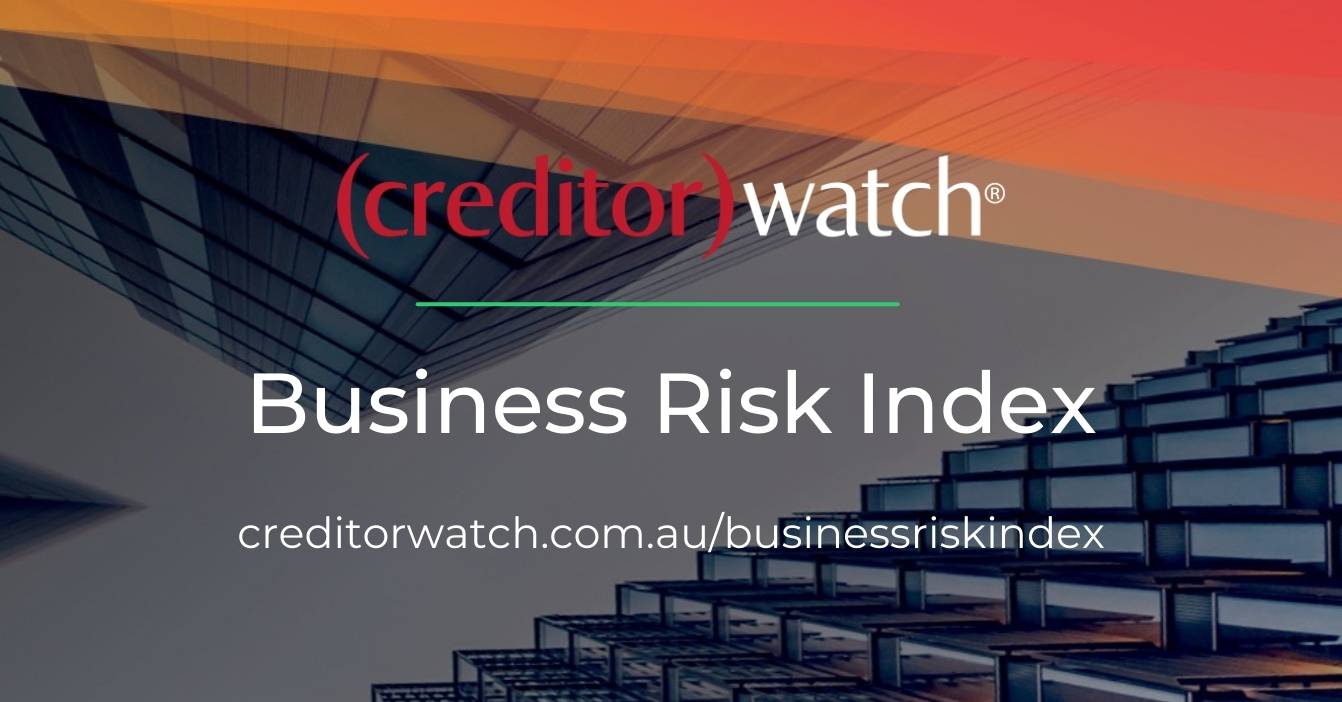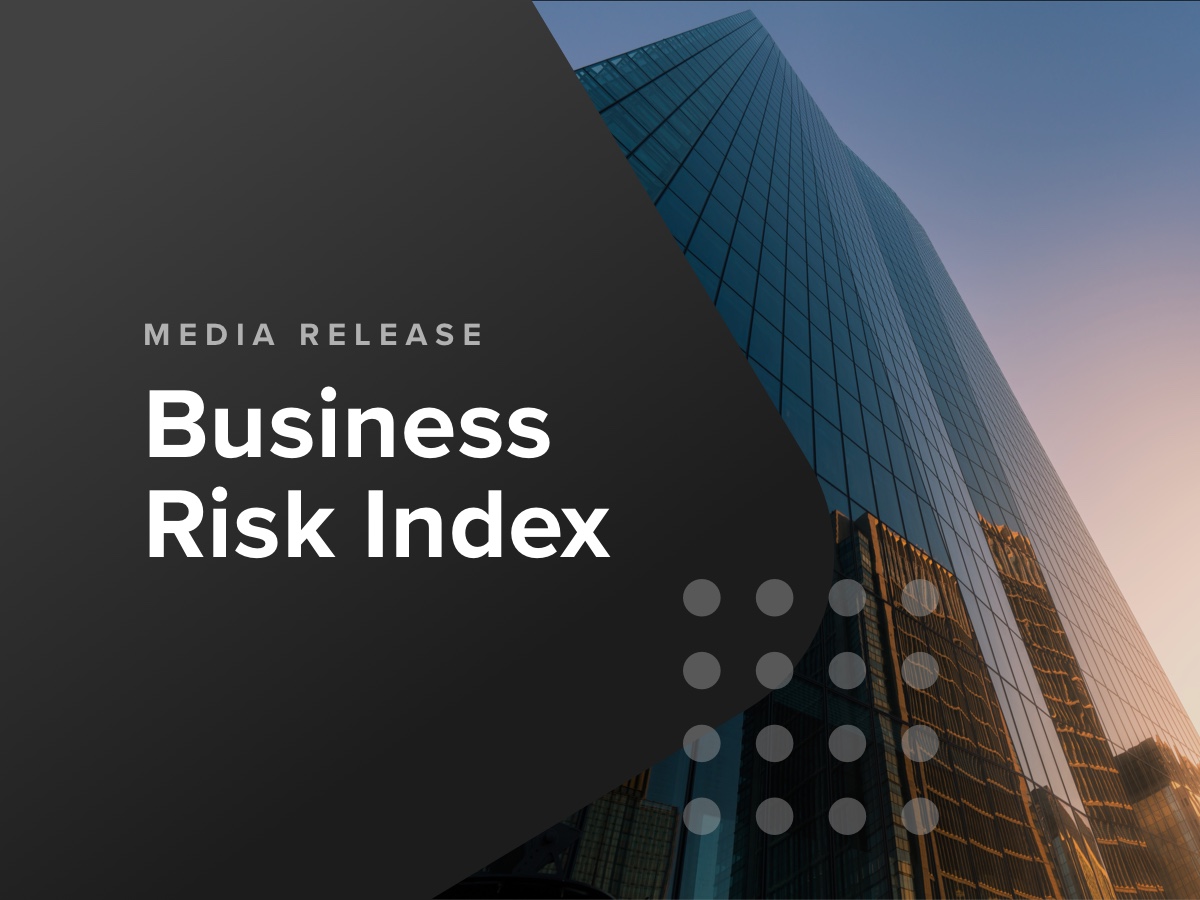Sydney, 13 October 2021 – Leading digital commercial credit reporting bureau CreditorWatch is today releasing the results of its inaugural monthly Business Risk Index, a groundbreaking predictive economic indicator to help guide businesses when making future growth plans and inform public policy.
The Business Risk Index is a new regional credit rating that ranks more than 300 Australian regions by relative insolvency risk, providing unique insights into the health of Australian businesses.
Each region is ranked from best to worst in terms of the potential for businesses in it to become insolvent. The index can also measure the potential for insolvency risk at a national, state and individual business level.
Regions are ranked on a scale from zero to 100, where 100 represents the best credit quality regions, that is, the lowest risk of insolvency, and zero represents the weakest credit quality regions, that is, the highest insolvency risk.
The index is calibrated by data from approximately 1.1 million ASIC-registered, credit-active businesses. It combines these insights with CreditorWatch’s proprietary data, previously published as the monthly Business Risk Review.
“This is the first time forward-looking insolvency risk has been measured in this way. The Business Risk Index provides a regional credit rating analogous to the credit ratings CreditorWatch assigns to each Australian business,” said CreditorWatch CEO Patrick Coghlan.
“It’s an important barometer of Australia’s economic health, and an invaluable resource as we navigate the choppy economic conditions as we come out of the pandemic and set up for future economic success,” he said.
Capital city data is particularly telling, said Open Analytics’ Managing Director James O’Donnell. Open Analytics designed the Business Risk Index.
“Increasing business to business trade payment defaults combined with weakening average credit scores in Sydney and Melbourne CBDs are early warning indicators of a future increase in business insolvencies ahead in these major city centres,” he said.
It’s important to read the results of the inaugural Business Risk Index in light of prevailing trading conditions.
“Extended lockdowns in NSW, Victoria and the ACT have subdued leading indicators such as defaults, court actions and external administration numbers. The Business Risk Index looks past these traditional indicators utilising new data to provide a true reading on commercial credit risk and the economy,” said CreditorWatch Chief Economist Harley Dale.
BUSINESS RISK INDEX RESULTS FOR SEPTEMBER 2021
Top five regions where the probability of default on payments due is highest Sep 2021 to Sep 2022
- Coolangatta, QLD: 7.45% (7.34%)
- Canterbury, NSW: 7.53% (6.95%)
- Bringelly – Green Valley, NSW: 7.66% (7.44%)
- Gold Coast – North, QLD 7.74% (7.07%)
- Merrylands – Guildford, NSW 7.76% (7.39%)
These results indicate how difficult trading is in regions such as Coolangatta and the Gold Coast, which rely on borders being open and the regular and ongoing influx of domestic and international visitors to support trade.
The results for Canterbury and Merrylands in NSW reflect the impact of operating in lower socio-economic areas, with low median incomes. More infrastructure and support for businesses in these areas could help to turn this around.
Top five regions where the probability of default on payments due is lowest Sep 2021 to Sep 2022
- Murray River – Swan Hill, VIC: 3.67% (2.86%)
- Limestone Coast SA 3.72% (2.84%)
- Moree – Narrabri NSW 3.72% (3.54%)
- Grampians, VIC (3.84%) 2.69%
- Eyre Peninsula and South-West, SA 3.87% (2.64%)
It’s telling that two of the five regions where default probability is lowest are in South Australia, one of the states that has been least impacted by border closures and COVID shutdowns. High commodity prices and favourable weather is also boosting business performance in regional areas like Moree – Narrabri and the Grampians, leading to low default probabilities.
Probability of default by industry
Highest
- Food and beverage services: 5.9%
- Arts and recreation services: 4.3%
- Financial and insurance services: 4.1%
The probability of default is highest for businesses in food and beverage services, given many have largely been shut due to COVID lockdowns, with 5.9 per cent of firms in this sector potential defaulters, well above any other industry. By contrast, in the second-worst sector, arts recreation services, the Business Risk Index suggests 4.3 per cent of businesses face the probability of default. Again, this is due to COVID lockdowns preventing performances.
Lowest
- Mining: 2.7%
- Agriculture, forestry and fishing: 3.0%
- Health care and social assistance 3.0%
While commodity prices such as iron ore are beginning to drop, overall high commodity prices have supported the mining sector. Favourable weather and high commodity prices are also lifting agribusiness performance. Health care is supported by public sector spending.
Payment arrears by industry
Highest
- Construction: 12.4%
- Accommodation, food and beverage: 11.1%
- Transport, postal and warehousing: 10.7%
*Percentage of firms in arrears by 60+ days in each industry.
The construction sector has been one of the hardest hit as a result of lockdowns, given total and partial forced COVID shutdowns in NSW and Victoria. As a result, 12.4 per cent of construction firms are in arrears by 60 days or more.
The accommodation, food and beverage sector is also behind with payments, with 11.1 per cent of firms in this sector in arrears by sixty days or more. This is to be expected given government-enforced COVID-closures have limited trading to takeaways.
Mr Dale noted that although the construction and accommodation, food and beverage industries have fared worst during lockdowns, they are likely to recover more quickly than some other sectors.
“If you look at the construction industry, their payment arrears are at 12.4 per cent, significantly higher than any other industry. Unsurprisingly, the accommodation, food and beverage industry scores the silver medal at 11.1 per cent,” he said.
“In a less restricted economic environment, these kinds of industries can bounce back. For example, consumers are going to thrive in the confidence of being able to go out to lunch and dinner, plus easier social interaction at cafes. This is a massive tick for the hospitality industry, a vital employer in the overall economy.”
Lowest
- Health care and social assistance 6.2%
- Agriculture, forestry and fishing 7.5%
- Education and training 8.1%
See above for commentary on health and agriculture. Education and training is the surprise result here. Lockdowns have forced study online and have boosted interest in online courses. The lack of international students does not appear to have had a sharp impact on credit risk for the university sector at this stage.
Credit enquiries
Credit enquiries were flat in September after a spike in March and, to a lesser extent, in June. This can be attributed to a stagnant economic environment as a result of lockdowns. Credit enquiries will be a leading indicator of business activity as the economy open up. The number of enquiries eased by two per cent over the September 2021 quarter, but were still seven per cent higher compared to the September 2020 quarter.
External administrations
External administrations fell by 23 per cent in the September 2021 quarter. There was a monthly peak in June 2021, the highest level since March 2020. Credit enquiries have since fallen significantly over three consecutive months. This result is also due to lockdowns and leniency shown towards businesses from financial institutions and the Australian Taxation Office (ATO). External administrations are expected to rise post lockdown. On an annual basis the number of external administrations fell by one per cent in the September 2021 quarter compared to the same quarter last year.
Business turnover
Business turnover has been falling since March 2020, dropping a massive 38 per cent year-on-year in September 2021, compared to a 16 per cent drop in turnover in September 2020. Extended lockdowns are crippling business activity and CreditorWatch’s measure of business turnover reinforces this point. Expect this indicator to trend upward once lockdown restrictions ease and industries including retail, food, accommodation and manufacturing start trading again.
Defaults
Defaults have been relatively stable in 2021, as creditors, the ATO and financial institutions have sought to work with businesses whose accounts are in arrears during this difficult time. Defaults fell by seven per cent over the September 2021 quarter and are down by 25 per cent from a year ago. This data point will also rise over time, the question is when. This a good result, but the magnitude of the decline suggests an increase in defaults will occur in October.
Court actions
Court actions were also down in September 2021, after a spike in August 2021. They rose 11 per cent in the September 2021 quarter but were down by nine per cent on an annual basis. Court actions will also ramp up once lockdowns have finished.
Outlook
The Australian economy is in a state of flux. While this week’s re-opening of the NSW economy is a positive step forward, it will only be when Victoria exits lockdowns and borders re-open between states and internationally that any sustained recovery can begin. However, easing restrictions will not generate economic recovery in a straight line. There will be plenty of bumps and uncertainties along the way.
Mitchy Koper
GM Communications and Marketing, CreditorWatch
mitchy.koper@creditorwatch.com.au
0417 771 778
About CreditorWatch
CreditorWatch is a digital credit reporting agency, headquartered in Sydney. From sole traders through to ASX listed companies, more than 50,000 Australian businesses now use CreditorWatch to make affordable, informed credit decisions, avoid high-risk customers and ensure they get paid on time. CreditorWatch customers can easily search for and monitor the credit history, court actions, payment defaults and insolvency notices associated with any business entity in Australia (including sole traders, trusts and partnerships) giving them an incredibly accurate picture of the risk posed to their business.
The company was founded in 2011 and has offices in Sydney, Melbourne and Brisbane. Find out more at www.creditorwatch.com.au


